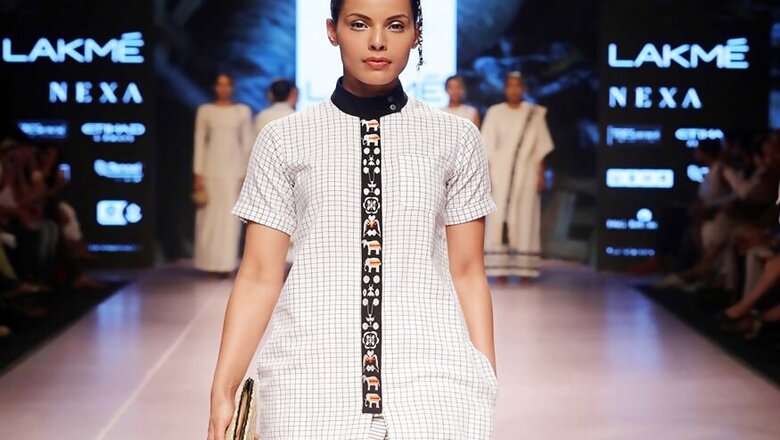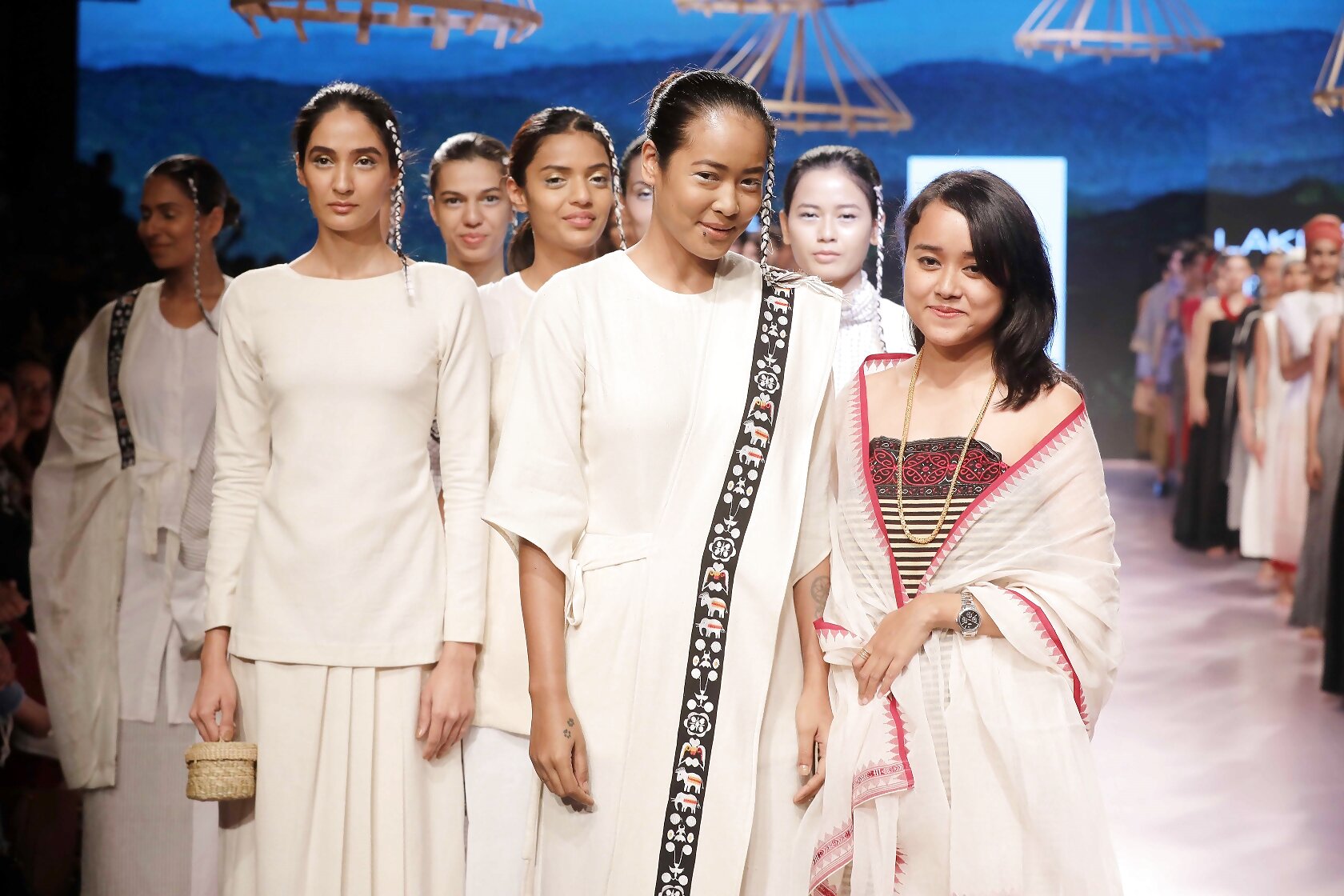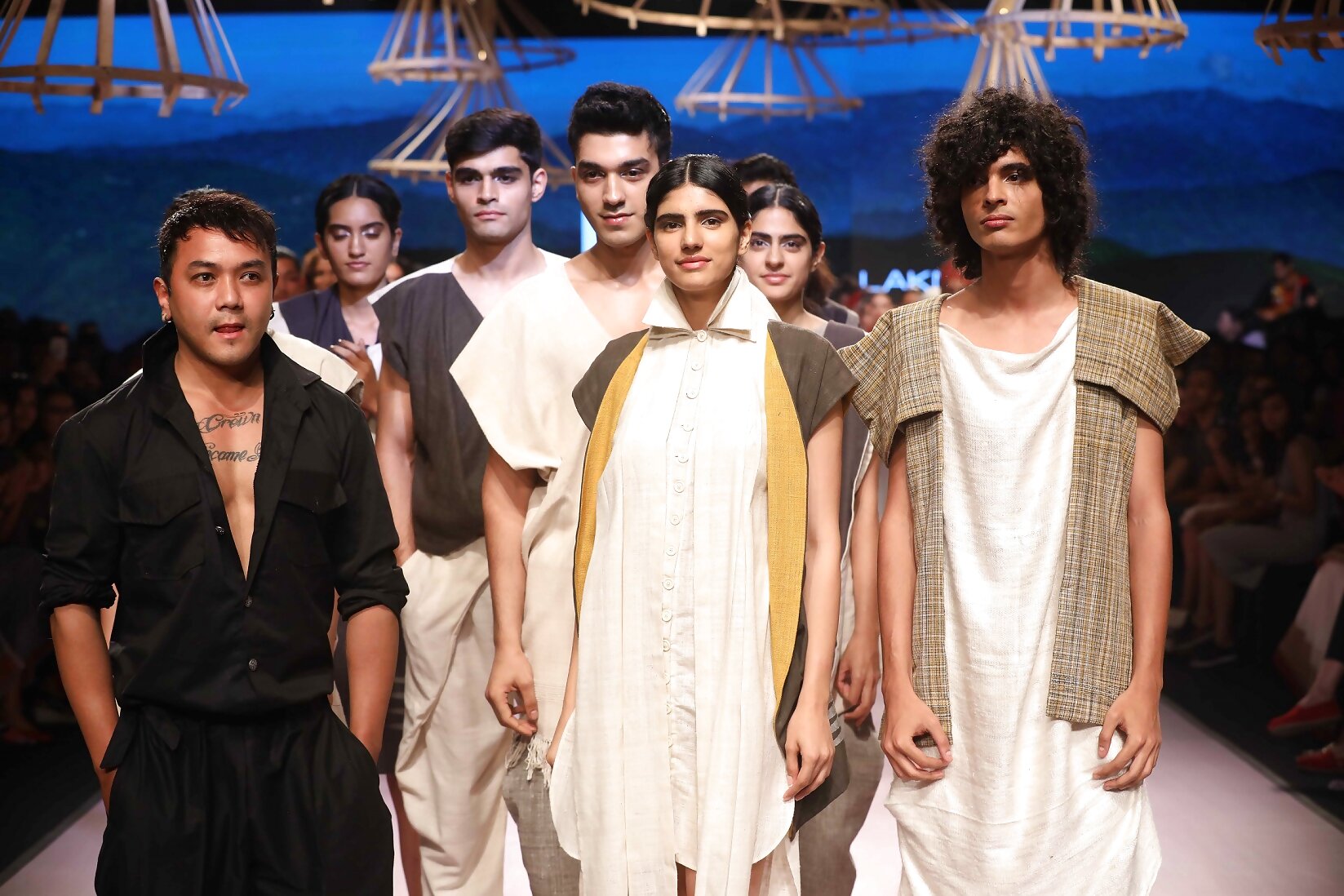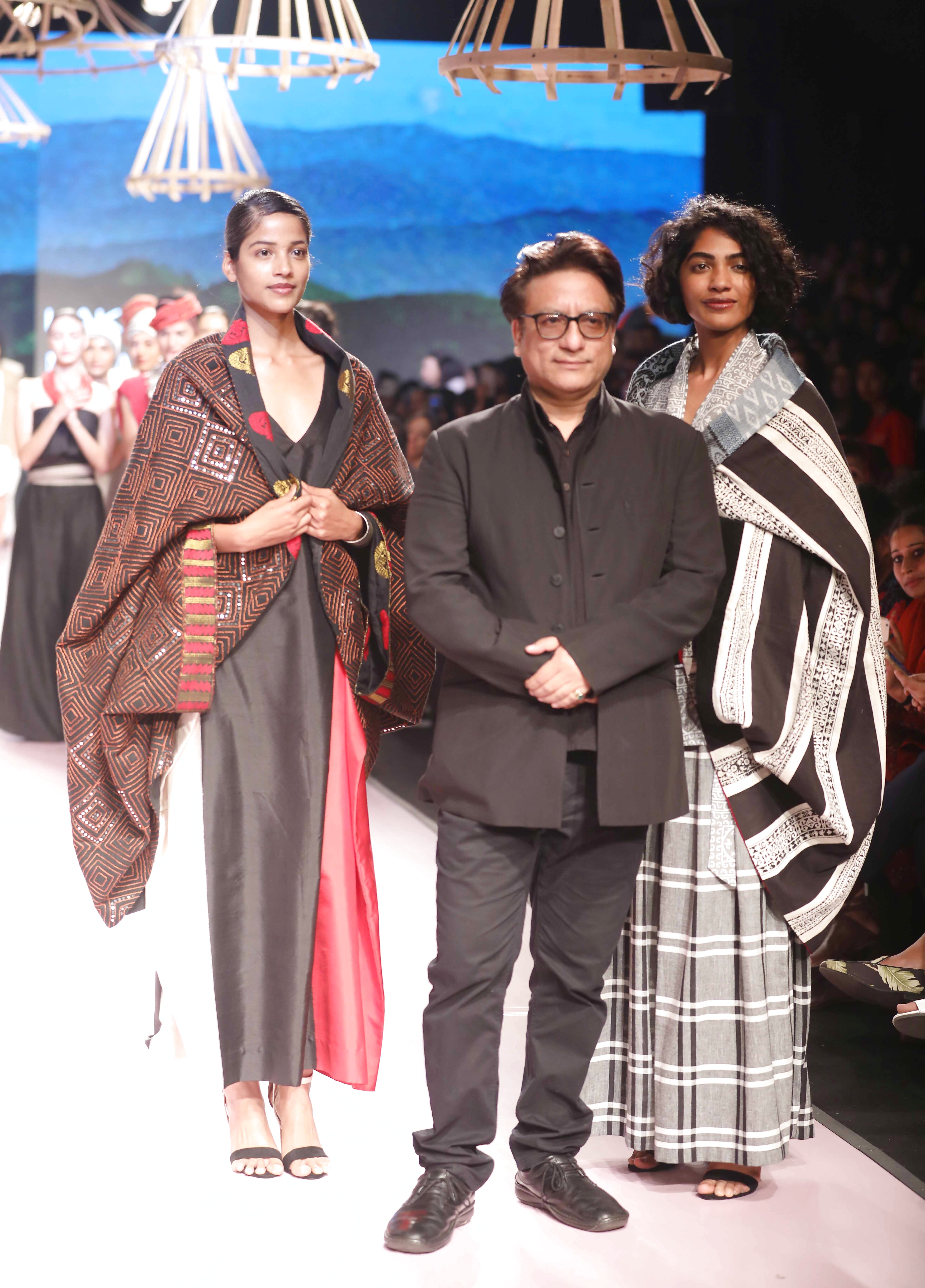
views
Quite a lot has been written about the street fashions in North East India, but little do people know that this perception of this naturally-stylish hub of the country, in fact, goes through a lot to bring out their crafts and textiles. At the IMG Reliance-United Nations' North East Mojo, a mélange of shades, styles and stories from Manipur, Sikkim, Meghalaya, Assam, Nagaland and Tripura unfolded on day two of the Lakme Fashion Week Summer/Resort. Amid the fashion and a lively performance by the Tetseo sisters, it's the weaver's tales, that perhaps deserve the most attention.
Richana Khumanthem, a designer from Manipur, narrated a story utilising motifs and textiles on the ramp and off it, and shared tales of women artisans and how the biggest problem of it all is the availability and accessibility of raw materials. "The weavers do want to work, but the main problem they face is with raw materials. All the raw materials in Manipur, especially cotton, is imported from Guwahati. So whenever there's curfew or a blockage, which happens very frequently in Manipur, these supplies stop," she says while speaking to News18.com.
"And this can go on from weeks to months to a year even, you don't know. At times like these, the quality gets compromised, the delivery date gets compromised," says Khumanthem, who shares that she herself has been through this when she had to redo her entire Autumn/Winter collection as the raw materials weren't delivered on time; however she is hopeful for a better future now. "The designers, who are working in metropolitan cities, are finally coming back to their roots and creating and doing something for their state. I think it's a very positive development, we're moving forward," she says.
Her collection comprising of bell-sleeved tunics, skirts and dresses, used Wankhei Phee handloom textiles, which are made from white cotton candy created by the Meitei community on a shuttle look.

Having presented a collection titled ShaKiLum, a Meghalaya-based designer Daniel Syiem brought to the ramp the hard-work of women weavers of RiBhoi district in the state. "We work with women who struggle a lot every day. They have turned it into a business for themselves and are now able to support their families. A lot of these women are single mothers, they have 9-10 children to feed. So today is not just a presentation of the textiles, the fabric or the collection, but it's a collection of stories," he says adding that the oldest women weaver he's working with is 96 and she's passed on her skills to her children and grand children.
Syiem, who presented a collection rich in layered silhouettes, points out that biggest challenge for the designers and weaves is production, saying, "We have been to fashion weeks all over the world, people love the fabrics, they appreciate it but then we cannot take bulk orders because the production is problematic." He hopes to get the weavers together, more organised, more centralised and give them better equipments and at the same time maintaining a connect to the traditional style of weaving.

Sonam Dubal from Assam, who has worked with recycled vintage fabrics, ikar, indigenous silk among others, highlights that it's about the visibility and recognition, which can only be done be through dialogues and discussions. "It's not about one person winning but a collective body of people making an entire region together. Dialogue and discussion is important to understand that we have a country which is very rich and sophisticated in terms of culture and art. While it takes a little while for people that belong to us to speak the language of design," he says.
He rightly points out that for the old-school weavers, weaving is not an occupation but a way of life, noting, "So ecological development to generate employment in certain parts of the country. These crafts need to be relegated internationally. The whole of the North East is a very fragile ecological stage and development has to be thought about."

Yuri Afanasiev, Resident Coordinator United Nations in India, hopes to make it fair for the producers, who mainly happen to be women, so that they receive fair compensation for all that they do and the products they create. "How can you build up these livelihoods and the industry in a way that you don't hurt the areas you're living in and especially areas like the North East which are incredibly sensitive and fragile from the ecological point of view," he says on being asked about sustainable fashion in India.
He says that there's hunger for Indian designs around the globe -- as long as there's a twist to the traditional styles -- but also shares that his colleagues are commenting on how the North Eastern designs aren't available in Delhi, unless you know someone. "It hasn't got the limelight it deserves, which is a shame. Because the show just explained that these dyes, styles, designs and fashion interpretations will all be welcome."


















Comments
0 comment